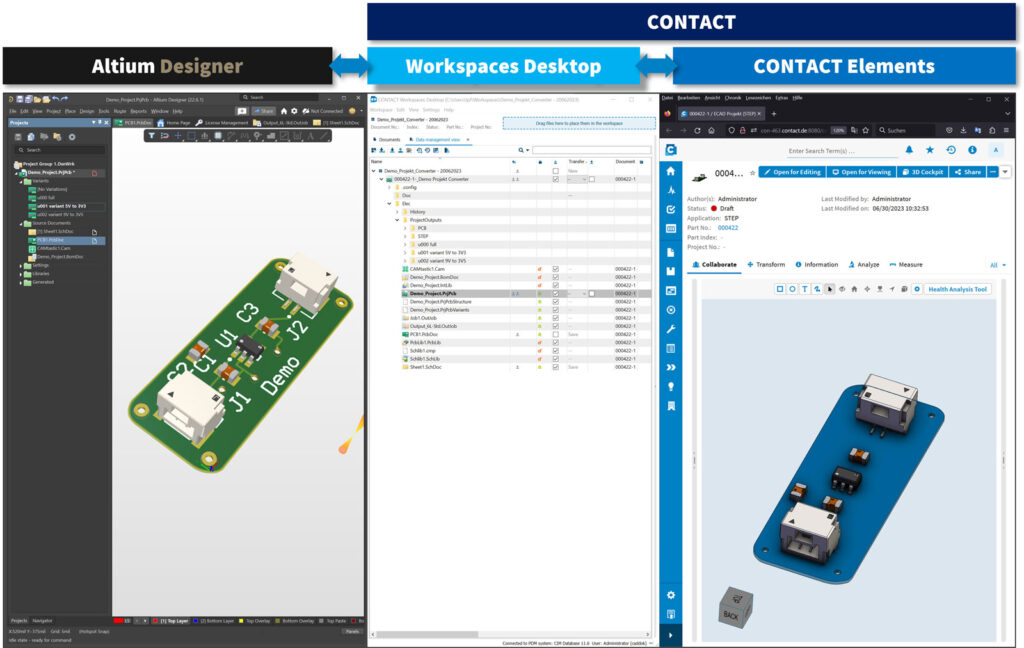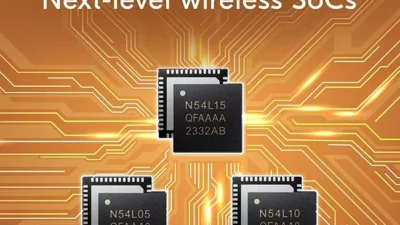CONTACT Elements supports loading existing Altium projects directly from the PLM.
BREMEN, Germany, Nov 18, 2024 – With an additional ECAD interface, electrical engineers can synchronize their Altium projects and component libraries with CIM Database PLM. This allows them to manage these projects company-wide on a central PLM platform.

Increasingly complex products require seamless collaboration across various disciplines within product development. Connecting electronic CAD (ECAD) and electronic design automation (EDA) systems to PLM prevents the risk of isolated data silos and miscommunication between departments. With the new interface to Altium Designer in its Elements platform, CONTACT Software ensures that all departments have access to consistent, up-to-date information, keeping the development process running smoothly.
Users can compile component libraries with their respective parts and metadata in CIM Database and export them via Workspaces Desktop. The downloaded workspace includes all relevant information for an Altium component library, allowing engineers to work with these parts in their Altium Designer projects seamlessly. Each part retains its ID defined in CIM Database, such as the part number. The article can therefore be identified across all three systems and the installation information can be traced at any time.
CONTACT Elements also supports loading existing Altium projects directly from the PLM or creating templates to serve as starting points for new projects. Conversely, users can also save their Altium projects back into the PLM. With a single click, Workspaces Desktop transfers all project information to the PLM system as a document and attaches it to the relevant part of the printed circuit board (PCB) or its assembly variants.
Assembly variants are standalone parts in the form of assemblies. They consist of components and a PCB combined in the product structure or bill of materials. As part of a larger product, PCBs can also be linked with other assembly variants within the mechatronic product structure, for example from the MCAD system. This provides centralized access to the fully connected product information.
For more information, visit contact-software.com.



